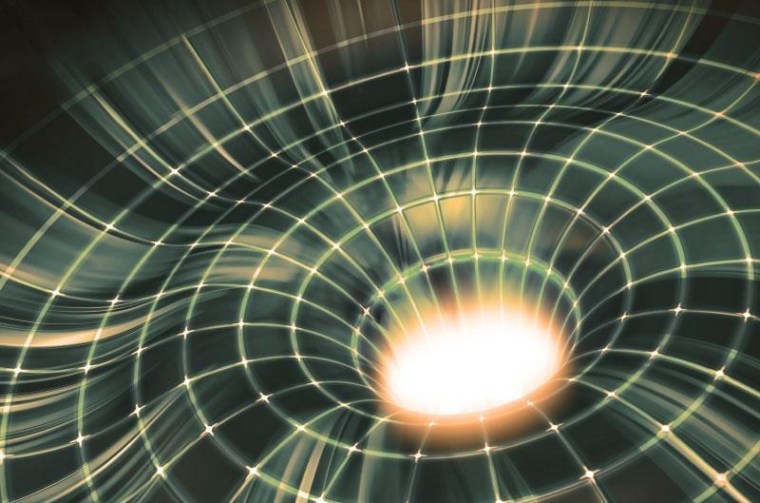You won't find any astrophysicists touting 1979's "The Black Hole" as a realistic study of cosmic singularities. Rampant with space noise, artificial gravity and a glowing whirlpool that empties into hell, the film gave only a passing nod to science.
Thirty years later, Disney has a remake planned, and director Joseph Kosinski insists they'll deliver on the science this time.
While other Web sites are busy speculating on who should play the mad Doctor Reinhardt, we thought we'd discuss the titular star eater itself. Grab your phone, Hollywood agents, because here are five real-life black holes worth considering for the picture.
Tiny Black Holes
Sure, big name stars are tempting, but instead of casting Tom Cruise or the Milky Way's supermassive Sagittarius A*, why not go with an unknown? A fresh-faced newcomer can often become the next big thing, and black holes are certainly no exception.

For starters, there's XTE J1650-500 in the Ara constellation. This cosmic anomaly is only 3.8 times the mass of Earths' sun and has a 15-mile (24-kilometer) diameter. Just think how awesome a fictional spaceship will look parked next to that.
Discovered in 2008, J1650 pushes the estimated lower size limits for a naturally occurring cosmic black hole, but scientists think manmade micro-black holes can actually go much, much smaller.
The catch is that these singularities vanish as soon as they form. A flash in the pan. They have next to no mass, exert near-zero gravitational pull and don't grow. Still, some scientists contend that under the right circumstances, humans could cultivate a miniature back hole and harvest its abundant energy — or destroy its creators. Young actors are always a gamble.
Binary Black Hole
Sure, one black hole is nice, but why not make this a buddy picture and cast a binary black hole system in the lead? Look into the center of galaxies NGC 6240 or 3C 75 and scientists think you'll find just such a pair of cosmic heavyweights.
Binary black holes occupy quasar nuclei and are formed by the merger of two colliding galaxies. Post-merger, each system's central black hole continue to circle around the other in a kind of cosmic dance. Still not sold? It gets even better. Scientists predict that binary black holes eventually merge into even larger black holes, clearly making for one climactic finale for the picture — to say nothing of the obvious sequel.
Parasitic Black Hole
Is the phrase "black hole" not scary enough for you? Need something edgier? Look no further than so-called black hole parasites. Rather than sucking in matter from an adjacent star, these singularities actually consume their host from the inside out.
The existence of these bizarre star eaters hinge on prolonged gamma ray bursts. Scientists have long suspected that these bursts signal the death of a particularly massive star. The alternative explanation, however, calls for a drawn-out death, not just a massive one. In this scenario, the parasitic black hole burrows in like a gigantic worm. It takes longer for the hole to consume the star this way, which prolongs the jets of expelled radiation.
Three decades have passed since an unsuspecting audience watched a robot eviscerate Anthony Perkins in a Disney movie. This time around, maybe the black hole itself should steal the show.
Black Hole Exile
In the original film, the titular black hole threatens a handful of humans, a few robots and an army of mindless cyborgs. Why not up the ante in your remake and cast a rogue black hole from another galaxy? Perhaps it's even hurtling toward an occupied system or the Earth itself?
When two galaxies merge, scientists believe the massive black holes at their centers sometimes circle up and consume one another. Other times, according to a controversial 2008 study, the outcome sees one black hole flung completely out of the galaxy. A team from Germany's Institute for Extraterrestrial Physics reported signs of a black hole speeding through a quasar called SDSS J0927+2943. This theoretical phenomenon is called a recoiling supermassive black hole.
Throw this bad boy into your movie, and suddenly you have a high-speed chase scene on your hands. It may be an uncertain theory, but seriously Hollywood, has that ever stopped you before?
Retrograde Black Hole
Imagine not just a supermassive black hole, but a backward-rotating supermassive black hole. In this, the singularity spins in the opposite direction of the accretion disc, the material spiraling into its inescapable density. This process pushes the accretion material away from the center, warping space-time to send powerful jets of ejected plasma out in opposite directions. These plumes then fuel the evolution of future galaxy clusters. See, black holes are creators as well as destroyers, so why not capitalize on that? Audiences love a complicated villain.
Any of these five black holes would make an excellent centerpiece for a science-fiction film, and they'd all provide a great opportunity to include the line, "I'm afraid this is no ordinary black hole." And if you could hire Jeff Goldblum to say it, all the better!
